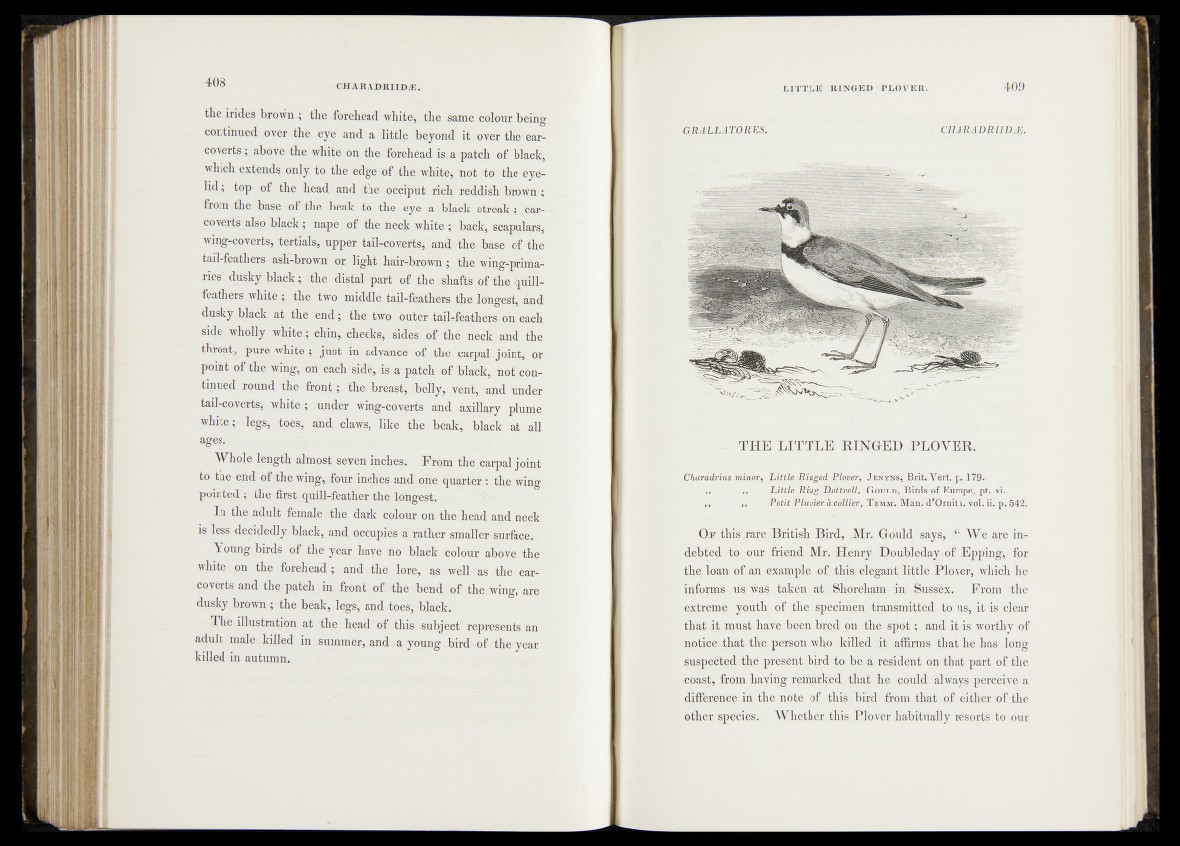
the irides brown ; the forehead white, the same colour being
continued over the eye and a little beyond it over the ear-
coverts ; above the white on the forehead is a patch of black,
which extends only to the edge of the white,- not to the eye*
lid ; top of the head and the occiput rich reddish brown;
from the base of the beak to the eye a black streak ; ear-,
coverts also black; nape of the nc'ck white ; back, scapulars,
wing-coverts, tertials, upper tail-coverts, and the base of the
tail-feathers asK-brown or light hair-brown; the wing-prima-
ries dusky black; the distal part of the shafts of the quill-
feathers white ; the two middle tail-feathers the longest, and
dusky black at the end; the two outer tail-feathers on each
side wholly white; chin* cheeks, sides, of the neck and. the
throat* pure white.;. just in a d v a n c e t h e carpal joint, or
point of the wing, on each'sideyis a patch of black, not Continued
round the-front; the breast, belly, vent, and under
tail-coverts, white ; under wing-coverts and axillary plume
white; legs, toes, and claws, like the beak, black at all
ages.
Whole length almost seven inches-. From the carpal joint
to the end of the wing, four inches and one quarter : the "wing
pointed ; the first quill-feather the •longest. * -
In the adult female the dark- colour on thehead and neck
is less decidedly.black, and occupies a rather smalk^surfafCe*,
Young birds of the year have no .black colour abo-ve the
white on the forehead; and the lore, as well as the'ear-
coverts and the patch in front of the bend :of the wing, are
dusky .brown ; the beak, legs, and toes, black.
4The illustration at the head of this subject represents an
adult male killed in summer, and a young bird of the year
killed in autumn.
GRALLATORES, CHARADRIIDJE.
^ ’^ | E ‘||® E a ,L E ^R lN G ED P L Q f p R .
Charadrius lninor&LiUle^jRii&ed^Ploper, rffaflrjrTfffjji Br i t * p. 1 l/f.9.h %
Vottrell' jBHSrxD, Birds of Europe, pt.
J< 1 SJ, '^zPrki$lilvxu>T a oollm u yST.ii. p. 542.
O f thiiS-^ai|e British Bird, Mr. G|j@|d We are indebted'
tp.-our friend Mr..Henry Doubleday of/Epping, -for
,the loan $£ an 'ex^ffiplc^otHKigaelegant little Plovter, which he
informs , us was taken. .'kti-jPlioreham innlBussex,. ■ From the
extreme ^yputh of the specimen transmitted to us, it, is clear
that i f .must hay^been/ h|g^| ©n. the spo t; *arid it is worthy of
notice;-thatdfahe >person~whcfe dmeda- it affirms that he has long
suspected the present bird to 'bf4»re®pjut on that part of the
Tbast, from having remarked, that h^ppuld always perceive a
differencCdin hljgnofMof |thls\bird from that , of either of the
other species. Whether this Plover habitually resorts to our